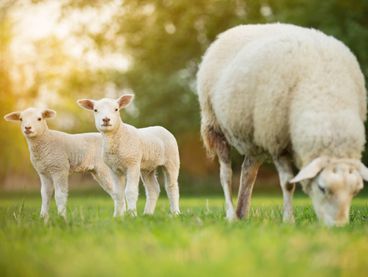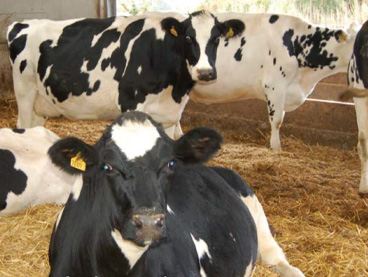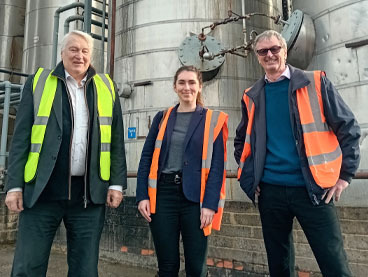In the first issue of Feed 4 Thought we visited the Robinson’s who farm near Tewkesbury and who had seen big benefits from fine tuning their system.
Still making progress four years on
In the first issue of Feed 4 Thought we visited the Robinson’s who farm near Tewkesbury and who had seen big benefits from fine tuning their system, working closely with Mike Chown from UFAC UK. Here, Mike updates on progress.
Richard and Neil run 200 cows which are fed TMR all year round with limited grazing in the summer and dairy compound in the parlour. The TMR is put through a diet feeder and put into troughs and round feeders using a skid steer loader. The cows are run as one milking group with two dry cow groups.
When I initially visited the farm there were a number of challenges. Cows were suffering excessive body condition loss in early lactation with extended negative energy balance reducing fertility. There were problems with acidosis and acid loading while a shortage of bypass protein was limiting yields.
To address the problems we replaced a proportion of rape and distillers in the TMR with Promega to increase DUP levels and to provide Omega 3 oils from marine sources to support fertility. Palm oil based fatty acids were replaced with Dynalac which is more highly digestible and rumen- inert to increase energy supply and reduce the acidosis risk.
As a result, Neil saw increases in both peak and lactation yields as a result of increased conception rates. Cows held condition better despite reduced concentrate feed rates, while better rumen health meant buffers could be removed, saving an extra £300/ month.
Better energy balance
In the last three years, Neil has continued to see improvements with milk from forage increasing from 9 litres per cow per day to 13 litres with an average daily forage dry matter intake of 14kg/day. Yield per cow has risen from 9,500 litres to 10,300 litres despite an increased proportion of heifers in the herd now.
We are still feeding Dynalac and Promega and have recently added extra methionine to the Promega. With high forage diets, DUP and specific amino acids become limiting factors, methionine often being the first limiting amino acid. In early lactation cows use body fat and muscle as an energy source. To replace muscle turnover it is critical to feed adequate amino acids.
Neil comments that every time we give the cows higher quality ingredients they respond with extra yield and we have amended milking times to be 12 hours apart. All the indicators show fresh calved cows are in better energy balance. Milk proteins are consistently higher while NMR fatty acid data show cows are in positive energy balance by 40 days in milk despite peaking at over 45 litres.
The results show the benefits of ensuring appropriate protein and dietary fatty acid supply to drive yield and fertility while increasing contribution from forage to control costs.
Fatty acids reduce impact on heat stress
On a really hot summers day you would probably feel less energetic and less inclined to eat as much as usual. As Mark Townsend from UFAC UK explains, cows are just the same and heat stress can be a real drain on performance
Cows begin to suffer symptoms of heat stress as soon as the temperature is above 15°C (60°F), which means that virtually every day of the grazing season they will be affected. High humidity makes the effects of heat stress worse.
As soon as they start to suffer from heat stress there is a cascade effect which leads to reduced production, lower milk fat and a risk of poorer fertility. The first thing is that they become less active and have increased respiration rates.
How often do we see cows sheltering under trees and hedges trying to keep cool?
Because they are less active they will drink less and also eat less. The combination of reduced dry matter, total energy and water intakes will lead to lower yields so it is important to do what you can to reduce the effect of heat, and one simple action is to change the energy sources in the diet. The rumen is a huge internal generator of heat as forages and cereals are fermented and heat is an unavoidable consequence, contributing to the negative effects of heat stress on cows.
On the other hand, highly digestible rumen-inert fatty acids that have a balanced fatty acid profile, are digested in the small intestines with no heat being produced. In addition, highly digestible fatty acids have at least twice the energy content of cereals meaning they can boost the energy content of the overall diet. Rumen-inert fatty acids also help reduce the risk of SARA and acidosis.
Replacing cereals with Omega Cream can reduce the heat of digestion and so reduce the heat load on cows. Also, by increasing the energy density of the diet they can lessen the impact of any reduction in dry matter intakes and lower the overall consequences of heat stress.


 Back to News
Back to News 



